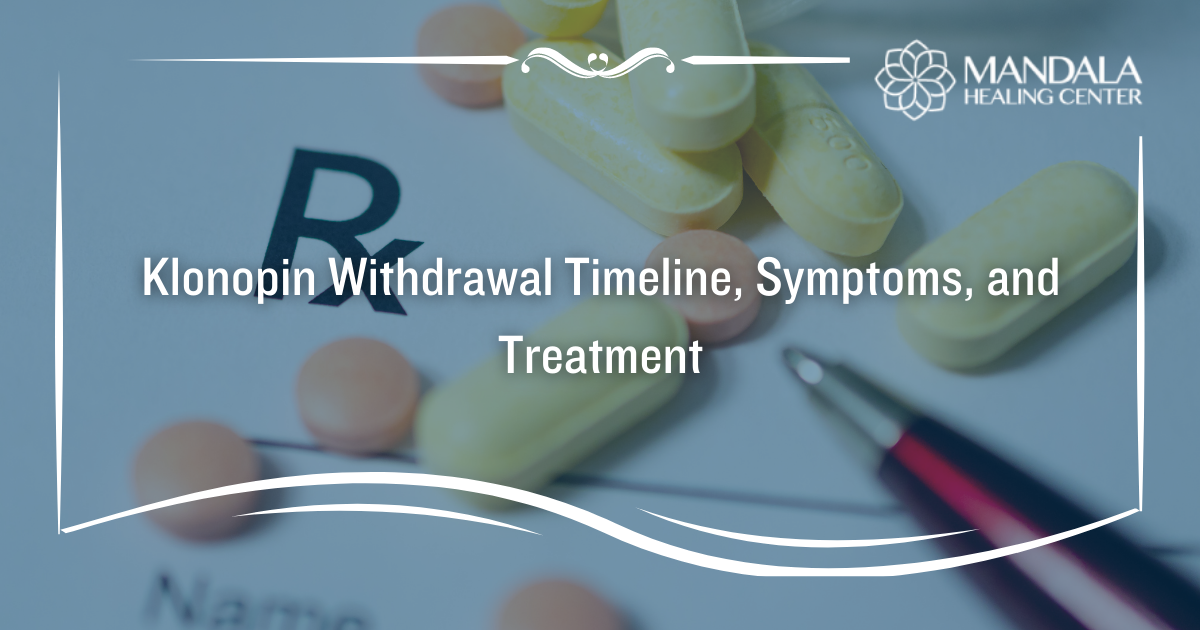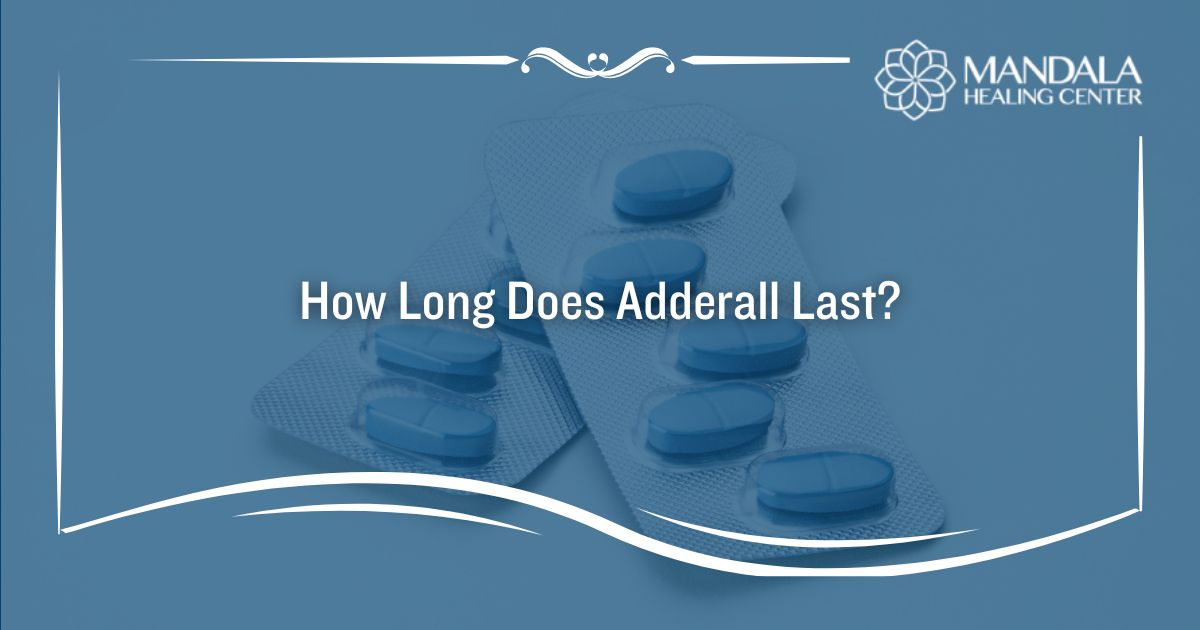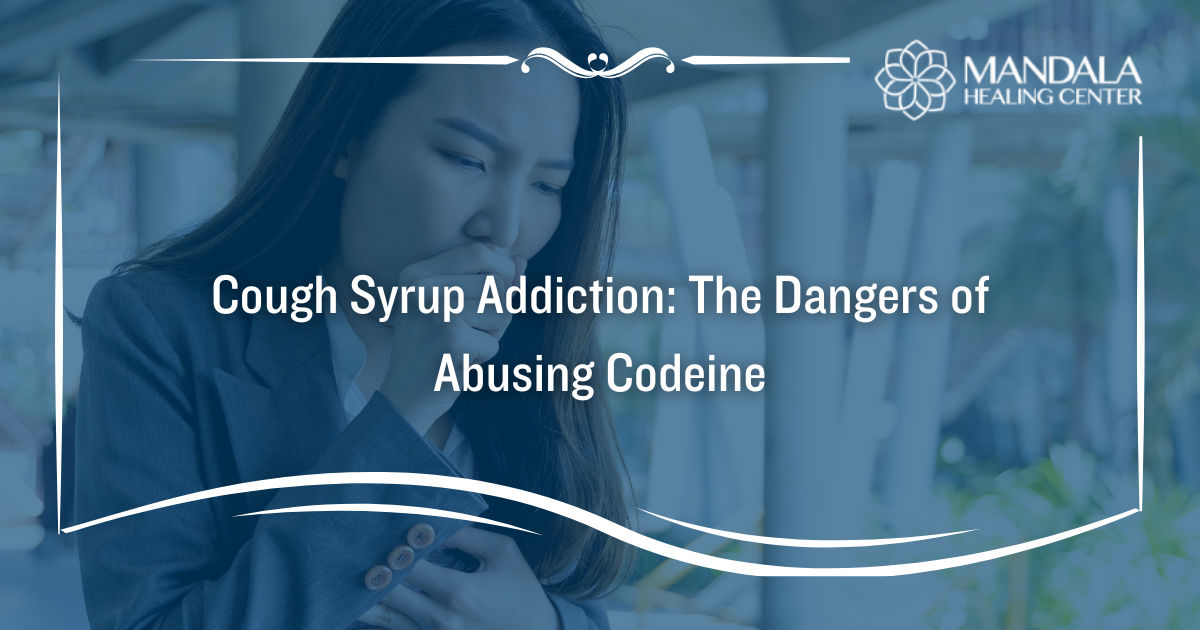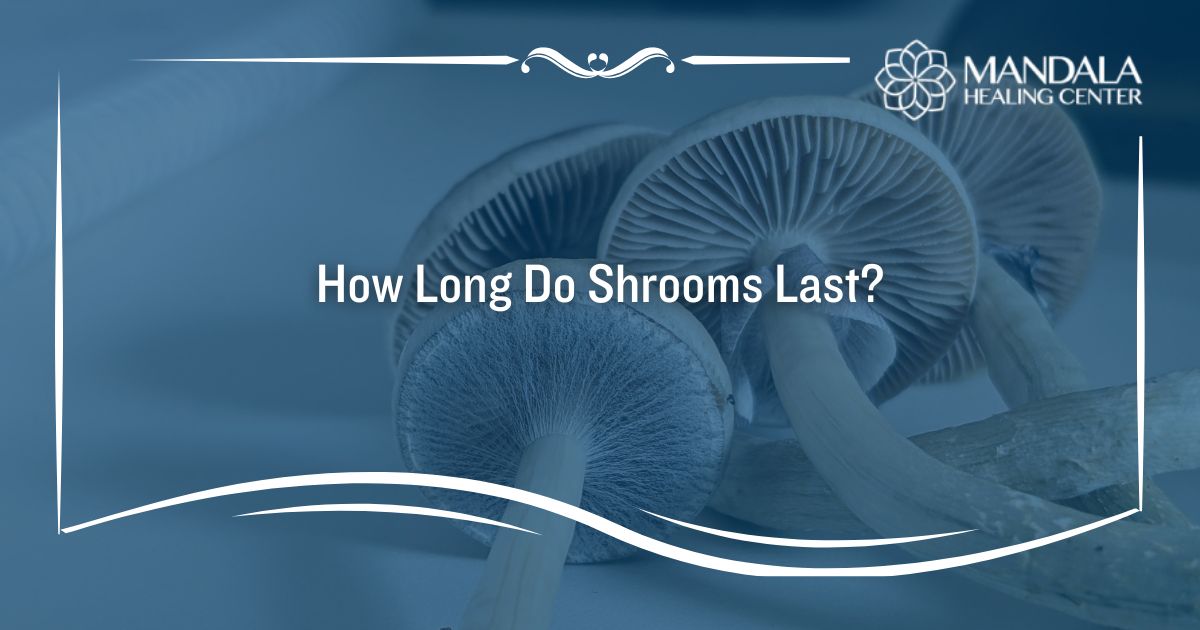Klonopin is the brand name for clonazepam, a benzodiazepine medication that is approved by the FDA to treat anxiety and seizure disorders.[1] While Klonopin has legitimate medicinal uses, it is can be addictive when abused.
Klonopin is a long-acting benzodiazepine that slows down brain activity to help you feel relaxed. While it can alleviate symptoms of anxiety, seizures, and panic attacks, some people abuse and become physically and psychologically dependent on the substance because of its relaxing effects.
Physical dependence occurs when your body is accustomed to the presence of the substance and relies on it to function properly. If you were addicted to Klonopin and stop taking it suddenly, you would experience symptoms of withdrawal.
The Klonopin withdrawal timeline varies in duration and severity from one patient to the next, but in severe cases it can be life-threatening. It is always safest to detox under close medical supervision. Contact Mandala Healing Center today to learn how our benzodiazepine detox center in West Palm Beach, FL can help you overcome Klonopin withdrawal.
What are the Symptoms of Klonopin Withdrawal?
The symptoms of Klonopin withdrawal are similar to that of alcohol withdrawal. You may feel edgy, irritated, and like you are coming down with the flu. Additionally, symptoms of the conditions you were taking clonazepam to treat, like anxiety, insomnia, or seizures, may come back.
It is important to note that the symptoms of Klonopin withdrawal will vary from person to person. While one person may experience mildly uncomfortable symptoms, another may deal with painful and life-threatening ones. Because it is hard to predict which symptoms you will experience, you must attend a medical detox program that is equipped to manage the symptoms you develop.
The physical symptoms of Klonopin withdrawal may include:[2]
- Hyperventilation
- Trouble sleeping
- Muscle spasms
- Loss of appetite
- Sweating
- Headaches
- Tremors
- Dizziness or unsteadiness
- Muscle aches and pains
- Blurred vision or other visual disturbances
- Extreme sensitivity to light
- Grand mal seizures
The psychological symptoms of Klonopin withdrawal may include:[2]
- Extreme anxiety and panic attacks
- Irritability and agitation
- Insomnia and restlessness
- Nightmares or terrors
- Depression
- Strange perceptual changes
- Trouble concentrating
- Delirium, delusions, and hallucinations
- Suicidal thoughts
The Klonopin Withdrawal Timeline
Because Klonopin is a long-acting benzodiazepine, the onset of withdrawal symptoms is between 2-7 days after your last dose. Typically, the symptoms peak in severity two weeks after discontinuing the drug and last for up to four weeks. However, some individuals may experience psychological symptoms much longer if they develop a condition known as post-acute withdrawal syndrome (PAWS).
How long Klonopin withdrawal takes is different for everyone, however, most people follow a general timeline:
Early Withdrawal
Your withdrawal symptoms will begin 2-7 days after your last dose. This phase is referred to as the early stage of clonazepam withdrawal. Most people will experience symptoms of anxiety, restlessness, insomnia, and agitation during this stage.
If you were taking Klonopin to treat a condition like anxiety, you may experience a re-emergence of the symptoms you experienced before taking the medication.
Acute Withdrawal
Sometime between one and two weeks after you discontinue clonazepam, you will enter the acute phase of withdrawal. This is when withdrawal symptoms are at their most severe. If you do not experience life-threatening symptoms, you can expect muscle cramps, headaches, severe insomnia, difficulty concentrating, and heart palpitations.
It is important to note that the life-threatening symptoms of Klonopin withdrawal (seizures and psychotic behavior) are common in this stage.
While acute Klonopin withdrawal can be difficult to cope with, medical detox programs will provide you with medications to keep you safe, stable, and comfortable. This stage of withdrawal usually subsides after a max of four weeks.
Post-Acute Withdrawal Syndrome (PAWS)
While it is most common for Klonopin withdrawal to subside after four weeks, some people continue experiencing symptoms for several weeks and even months, a condition known as post-acute withdrawal syndrome or PAWS.[3]
The symptoms associated with PAWS are mainly psychological, like anxiety and depression. You could also experience headaches, dizziness, and tinnitus (ringing in the ears). The symptoms of PAWS can be managed with medication, lifestyle changes, and behavioral treatment.
How is Klonopin Withdrawal Treated?
The safest way to detox from Klonopin is to do so under medical supervision. Drug and alcohol detox centers can provide you with medications to soothe your symptoms of withdrawal and prevent cravings from occurring. Medical staff will monitor your vitals constantly to ensure that you are responding well to the detoxification process.
Oftentimes, drug detox centers use other benzodiazepines to taper you off of Klonopin. This means that they will gradually reduce the number of benzodiazepines you are taking until your body is cleared of the substance. Tapering prevents you from experiencing any symptoms of withdrawal, keeping you safe from life-threatening symptoms such as grand mal seizures and suicidal thoughts.
If you do experience any symptoms of Klonopin withdrawal, other medications will be prescribed for relief. For example, if you are struggling with insomnia your doctor will give you a sleeping medication.
Once you have completed detox, you will move on to the next stages of recovery. It is recommended that you attend an inpatient addiction treatment program directly after finishing medical detox so that you can receive the tools and support you need to maintain a sober lifestyle.
Finding Help for Klonopin Addiction
If you or a loved one suffer from Klonopin addiction, you should never attempt to detox at home. Benzodiazepine withdrawal can cause life-threatening effects such as grand mal seizures and psychotic behavior, so it’s vital to seek medical care.
Patients who visit the Mandala Healing Center struggle with a variety of addictions. Our caring and attentive team are ready to help each patient find solutions for lasting sobriety and truly heal from within. We are acutely aware that every individual has a unique set of needs. Accordingly, our alcohol and drug detox programs are personalized for each individual, utilizing evidence-based practices and holistic approaches.
Contact us today to get started.
References:
- https://www.accessdata.fda.gov/drugsatfda_docs/label/2013/017533s053,020813s009lbl.pdf
- https://pubmed.ncbi.nlm.nih.gov/7841856/
- https://www.semel.ucla.edu/dual-diagnosis-program/News_and_Resources/PAWS












